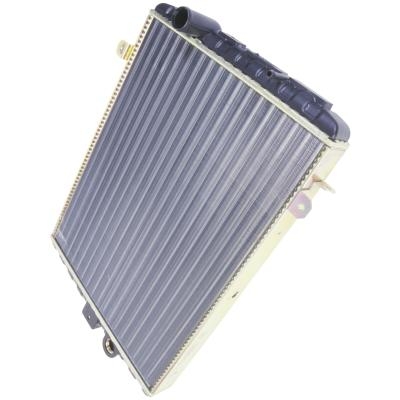
According to the National Automotive Radiator Repair Association (NASRA), the lifespan of the radiator has more to do with radiator leaks than with mileage. Environmental factors such as heat, road salts, various chemical reactions and assorted debris can cause radiators to break down and begin to leak. Recognizing common symptoms of radiator leakage can save you time and money, and it might prevent your vehicle from breaking down at a critical moment.
The presence of neon-colored, slimy fluid beneath your vehicle is a sign of a radiator leak. Radiator fluid is yellow, orange, blue or red, depending on the radiator fluid used. Radiator fluid often smells sweet, is highly toxic and attracts small animals.

Leaking radiators disperse liquid in spots or puddles under the vehicle, in droplets on the underside of the hood or in the engine compartment and its various parts, such as on hoses, belts, the radiator itself or the overflow bottle.

Hissing, spraying or gurgling sounds are common when a radiator is leaking. These sounds can be heard from within the vehicle as well as outside of the vehicle. White, bellowing smoke also may be seen when a radiator leaks and the fluid spills onto hot surfaces such as the manifold, radiator or valve covers. A reading of "hot" on the temperature gauge also can be an indication of a leaking radiator.
Checking the fluid level on your radiator can reveal radiator fluid leakage if the fluid level is low frequently. If you need to add radiator fluid or water regularly to your radiator, it may be a sign of a leaking radiator.